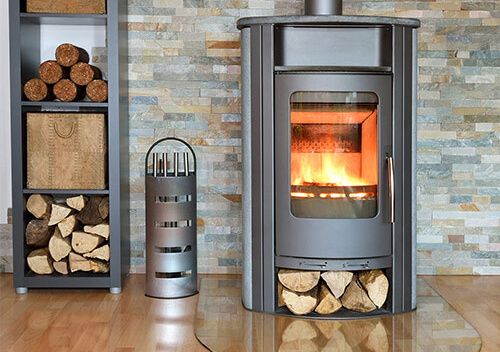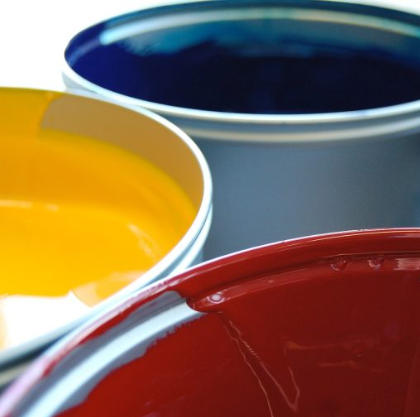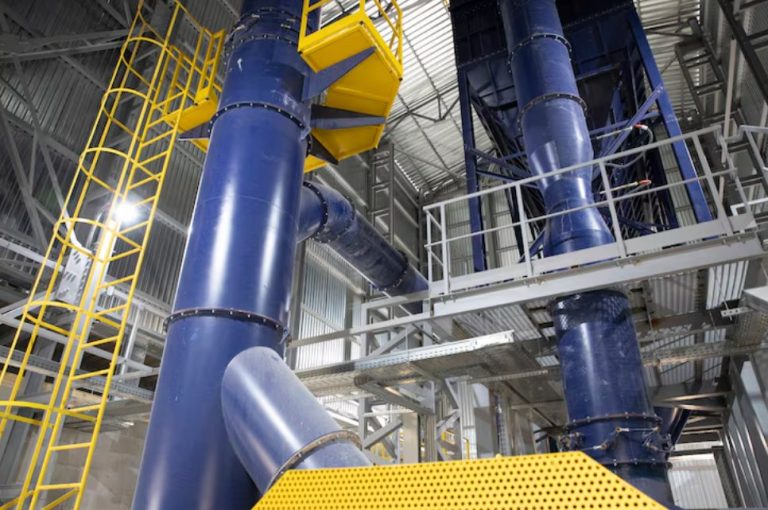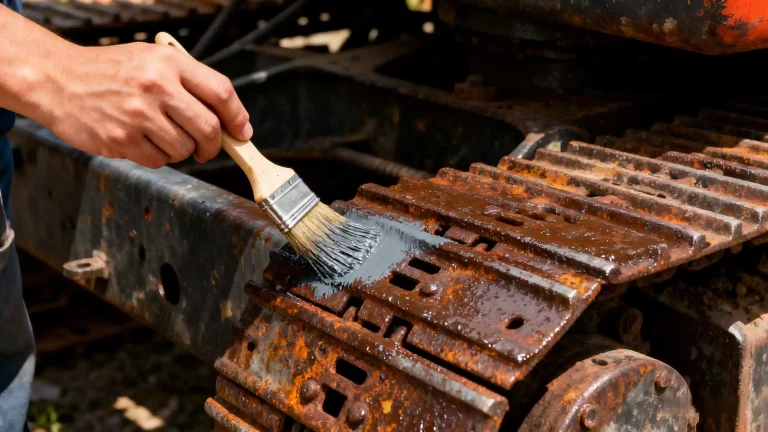
Extreme thermal conditions can cause serious harm to bare surfaces. This harm often shows as fading, flaking, or even damage to the material itself. Whether you handle fireplaces, BBQ cookers, gas cooker parts, or factory machinery, selecting the proper heat-resistant coating is vital. It ensures lasting strength, safety, and good looks. In this article, we’ll look at top-performing heat-resistant coatings for different jobs. We focus on their power to endure heat levels reaching 800°C. From home hearths to vehicle exhaust tubes, we’ll detail leading coating choices. We’ll explain their advantages and real-world uses. This knowledge helps you pick wisely.
Why Heat-Resistant Coatings Matter
Heat-resistant coatings are special protective layers. Designers create them to guard surfaces against intense heat, rusting, and decay. These protective layers are crucial. They keep the soundness of things facing high warmth. Examples are metal parts in fireplaces, BBQ cookers, or car exhaust setups. Using the correct coating allows you to:
- Block heat harm:Shield surfaces from breaking, peeling, or color change.
- Boost service life:Make tools and constructions last longer.
- Increase safety:Lower dangers linked to fire or heat failure.
- Cut upkeep expenses:Reduce the need for regular fixes or swaps.
Demand grows for top-grade substances in fields like autos, home machines, and factory making. Because of this, heat-resistant coatings are now essential. Let’s explore top picks for particular jobs, especially those needing defense near 800°C.
Top Heat-Resistant Coatings for High-Temperature Applications
Silicone-Based Heat-Resistant Coatings
Silicone-based options rank among the most dependable answers for surfaces facing intense warmth. These protective layers contain organic silicone resin. They can survive temperatures from 200°C right up to 800°C. This toughness makes them perfect for tough tasks. Examples are fireplaces, BBQ cookers, and gas cooker racks.
Key Benefits of Silicone-Based Coatings
- Strong heat endurance:They bear direct fire contact up to 800°C. They do this without flaking or losing color.
- Superb sticking power:They make a hard, long-wearing film. It clings firmly to metal exteriors. It holds up against heat swelling and shrinking.
- Rust and sun resistance:They guard against oxidation, chemical decay, and UV harm. This promise ensures extended soundness.
- Wide usefulness:They fit both factory and home jobs. This includes exhaust tubes and heater casings.
Application Scenarios
- Fireplaces:Silicone protective layers keep shade steadiness. They stop peeling under lengthy high heat exposure. This keeps your fireplace both working well and looking nice.
- BBQ Cookers:These substances endure the heat and grease mess common during cooking. They boost cleanliness and meal safety.
- Gas Stove Racks and Flame Heads:Silicone-based coatings resist direct fire and high warmth. They keep a rust-proof, flake-free surface.
Ceramic-Based Heat-Resistant Coatings
Ceramic choices are another great pick for high-heat settings. They offer outstanding heat insulation and toughness. These protective substances can manage temperatures up to 1093°C (2000°F). This capability makes them right for severe jobs beyond the 800°C mark.
Key Benefits of Ceramic-Based Coatings
- Remarkable heat tolerance:Ideal for exteriors facing fierce heat strain. Examples are factory ovens or car exhaust arrangements.
- Heat insulation:Lessens heat passage. It shields base substances from heat shock.
- Sturdiness:Resists cracking and wearing even under lengthy heat contact.
Application Scenarios
- Fireplaces and Baking Ovens:Ceramic coatings give strong protection for metal parts in fireplaces and ovens. They stop powdering and keep material soundness.
- Factory Gear:Used in high-heat settings like steam boilers and waste burners. Here, extreme heat endurance is critical.
Epoxy-Based Heat-Resistant Coatings
For jobs needing medium heat resistance (up to 260°C or 500°F), epoxy-based choices give a budget-friendly answer. They are not as heat-sturdy as silicone or ceramic types. But they offer superb rust resistance. They are suitable for less harsh settings.
Key Benefits of Epoxy-Based Coatings
- Rust resistance:Protects metal surfaces from corrosion and chemical damage.
- Cost-effective:A pocket-friendly choice for jobs with lower heat needs.
- Flexible use:Suitable for pipe networks, steam boilers, and mechanical parts.
Application Scenarios
- Heater Casings:Epoxy coatings supply a long-wearing finish for heaters running at medium temperatures.
- Factory Pipe Networks:Guards against rust in places with occasional high warmth.
Comparing Heat-Resistant Coatings for Different Surfaces
To help pick the best heat-resistant coating, see this comparison chart. It sums up main traits and uses for each type:
| Feature/Coating Type | Silicone-Based | Ceramic-Based | Epoxy-Based |
| Max Temp | ~800°C | ~1093°C | ~260°C |
| Adhesion | Excellent | Very Good | Good |
| Corrosion Resist | Excellent | Good | Excellent |
| UV Resist | Excellent | Fair | Varies |
| Flexibility | Good | Fair | Good |
| Cost | Moderate | Higher | Lower |
| Ease of App | Moderate | Moderate/Difficult | Easy |
Surface Type & Best Coating Choices
- Metal (Fireplaces, BBQ Cookers, Exhaust Tubes):Silicone, Ceramic. Up to 800°C (Silicone), 1093°C (Ceramic). Fireplaces, BBQ cookers, gas cooker racks, flame heads, exhaust tubes.
- Concrete (Ovens, Factory Floors):Acrylic, Cementitious. Up to 1093°C. Factory ovens, fireplaces.
- Timber (Furnishings, Decks):Intumescent, Polyurethane. Up to 204°C. Fireproofing wood constructions, outside furnishings.
- Plastics (Factory Parts):Fluoropolymer, Silicone. Up to 315°C. Electrical parts, plastic pieces.
- Glass (Oven Doors, Cookware):Ceramic, Borosilicate. High heat tolerance. Oven doors, factory glass sheets.
Application Tips for Heat-Resistant Coatings
Getting the best from heat-resistant coatings needs proper use. Follow these actions for top outcomes:
Surface Prep:
- Clean the base material completely. Remove grease, water marks, and dirt.
- Polish the outside to show a metal shine. This aids better sticking.
Coating Use:
- Mix in the advised thinner in the right amount.
- Apply a light, smooth layer. Use a spray tool for finest results. If you lack spraying gear, use a brush. But apply thinly to prevent lumps.
- Avoid very thick coats. This can harm sticking power and life span.
Curing Process:
- Option 1:Bake the covered part in an oven. Set it to 280°C for 15 minutes. This allows instant use.
- Option 2:Let the coating dry naturally in air for 24 hours. Do this if baking tools are unavailable.
Following these steps ensures a strong, lasting finish. It stands up to high temperatures and surrounding pressures.
Konaz: Your Trusted Heat-Resistant Coatings Supplier

For top-performing heat-resistant coatings, Foshan Konaz Technology Co., Ltd. stands as a trusted industry frontrunner. Founded 15 years back, Konaz focuses on creating and making advanced special-purpose coatings. They emphasize high-warmth resistant answers. They run a modern 3000-square-meter plant. It holds over 30 high-end production units. Yearly output hits 1000 tons. Konaz provides high-quality substances meeting worldwide norms. Their silicone-based coatings endure up to 800°C. People use them widely in fireplaces, BBQ cookers, exhaust tubes, and other high-heat tasks. Exported to global markets, Konaz goods are known for reliability, sturdiness, and new ideas. This makes them the top pick for companies and buyers wanting the best heat-resistant coatings.
Conclusion
Picking the best heat-resistant coatings depends on your exact job, heat demands, and surface kind. Silicone-based choices are perfect for fireplaces, BBQ cookers, and gas cooker racks. They give outstanding work up to 800°C. For harsher states, ceramic coatings offer better heat tolerance. Epoxy coatings suit medium warmth levels. Choosing the right substance and using it correctly protects your exteriors from heat harm. It boosts sturdiness and cuts upkeep costs. With reliable providers like Konaz, you get top-grade coatings made for your needs. This assures long-term defense and performance.
Frequently Asked Questions (FAQs)
What are the best heat-resistant coatings for fireplaces?
Silicone-based and ceramic-based choices are the best heat-resistant coatings for fireplaces. Silicone types hold up to 800°C. They keep color steadiness and sticking under direct fire contact. Ceramic options give even higher heat tolerance (up to 1093°C) for severe states.
Can the best heat-resistant coatings be used on BBQ cookers?
Yes, silicone-based coatings are strongly suggested for BBQ cookers. They resist temperatures up to 800°C. They stop peeling from heat and grease mess. They promise a rust-proof, sturdy finish.
How do I apply heat-resistant coatings to gas cooker racks?
To apply the best heat-resistant coatings, scrub the racks fully. Put on a light layer of silicone-based substance using a spray tool or brush. Then either bake at 280°C for 15 minutes or air-dry for 24 hours. This ensures a peel-proof, color-stable surface.
Are the best heat-resistant coatings earth-friendly?
Many modern heat-resistant coatings, like those from Konaz, have low-VOC mixes. These follow worldwide earth rules. This makes them safe and green for various tasks.
How long do the best heat-resistant coatings last?
The life of heat-resistant coatings relies on the job and surrounding states. Silicone-based types, when used right, can serve for years under high heat. They fight oxidation, rust, and heat strain.










